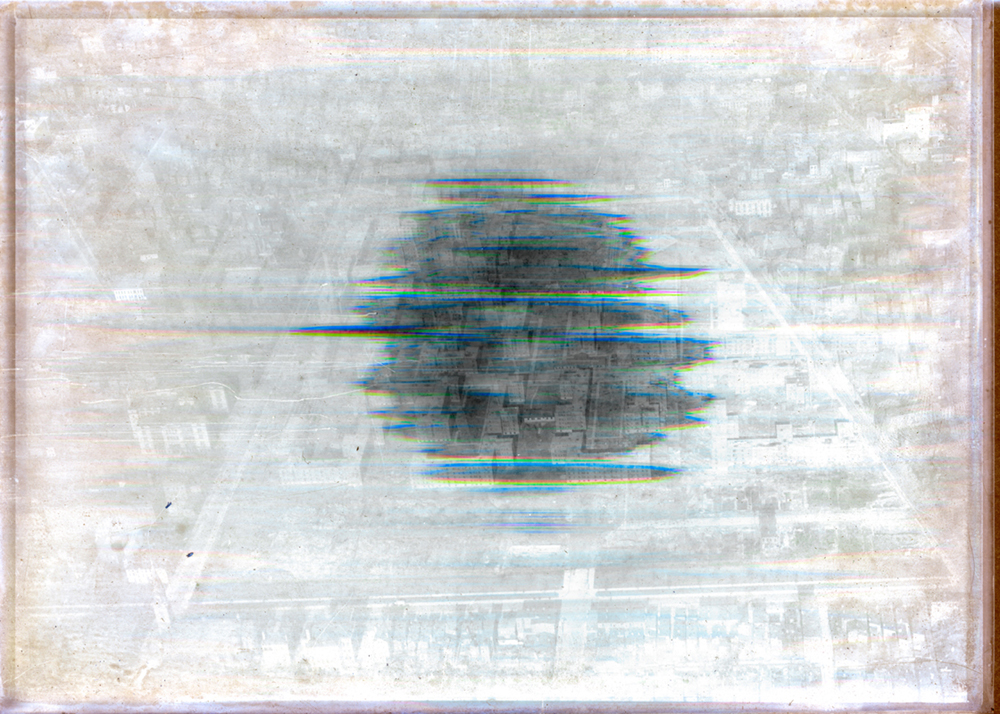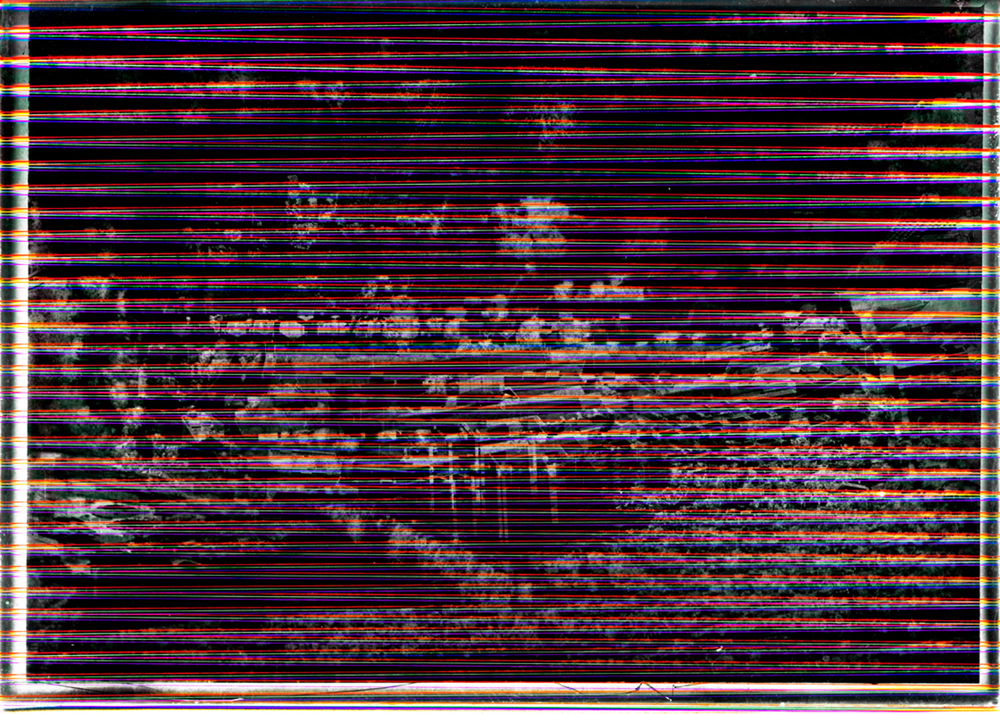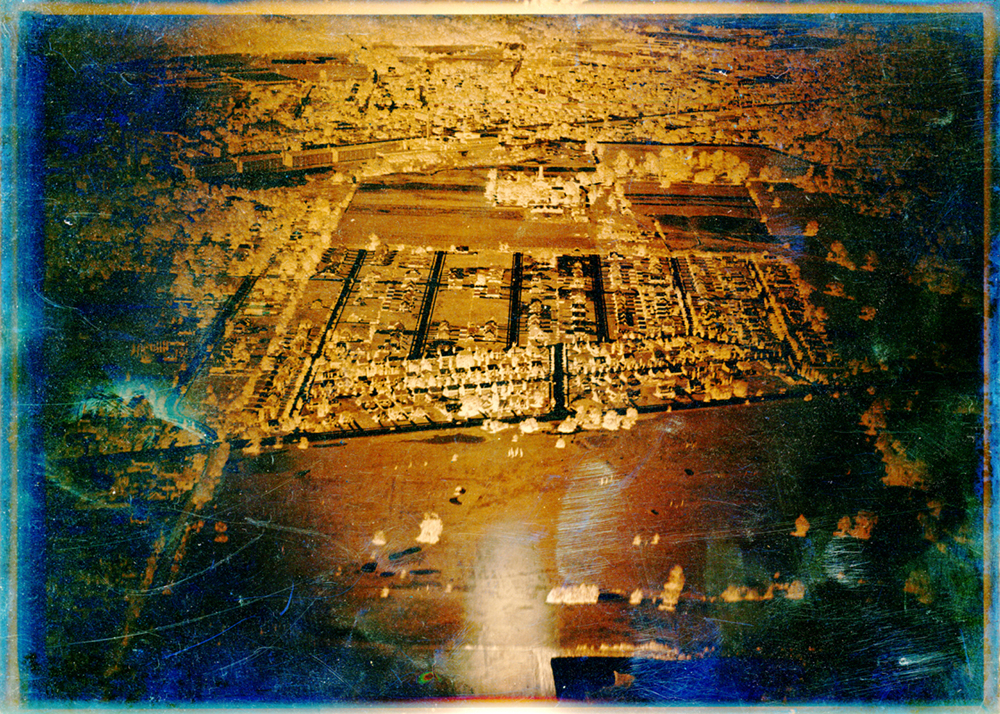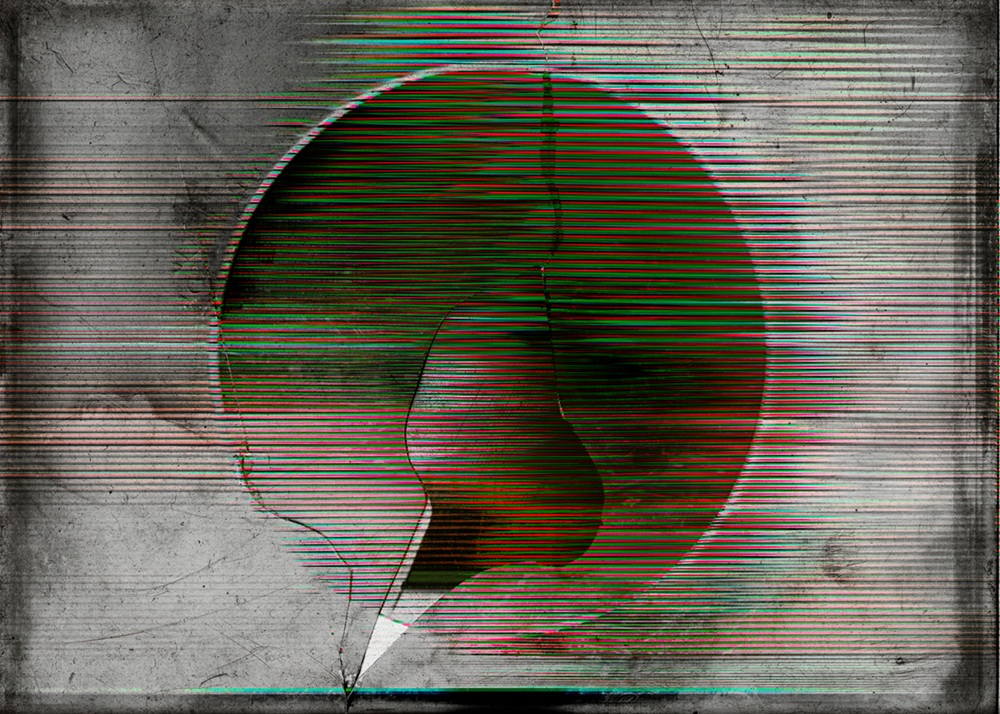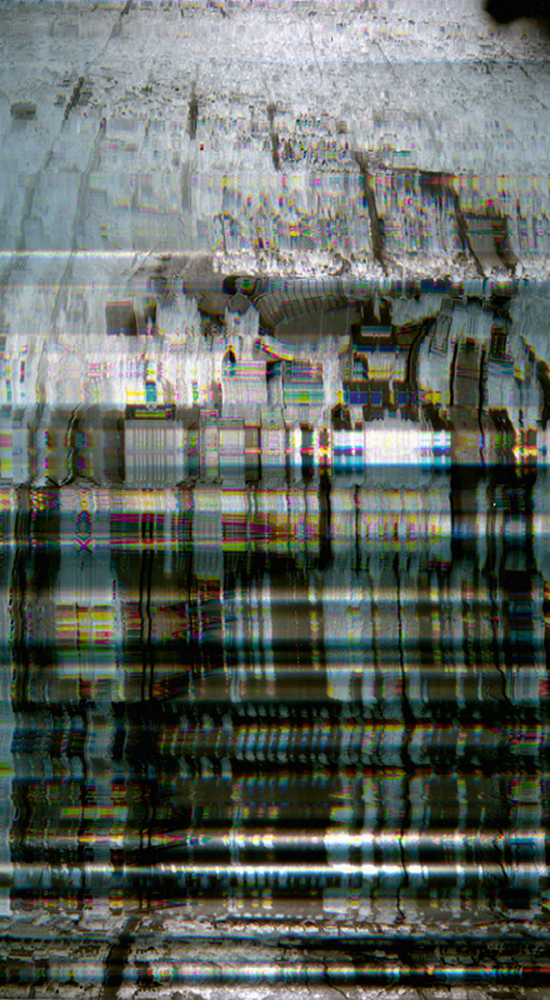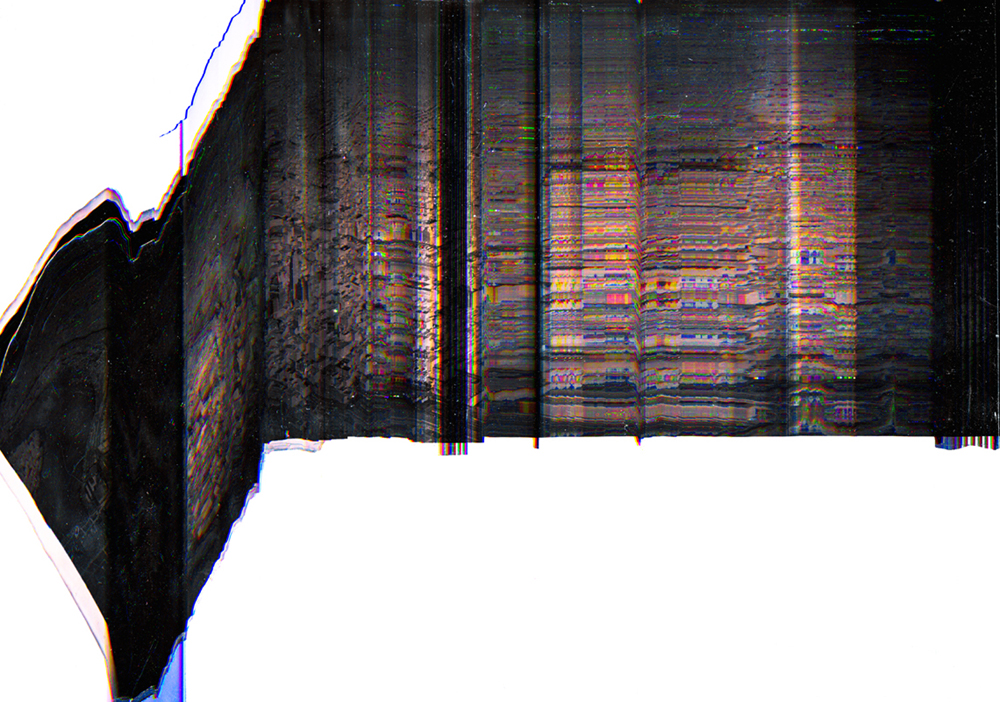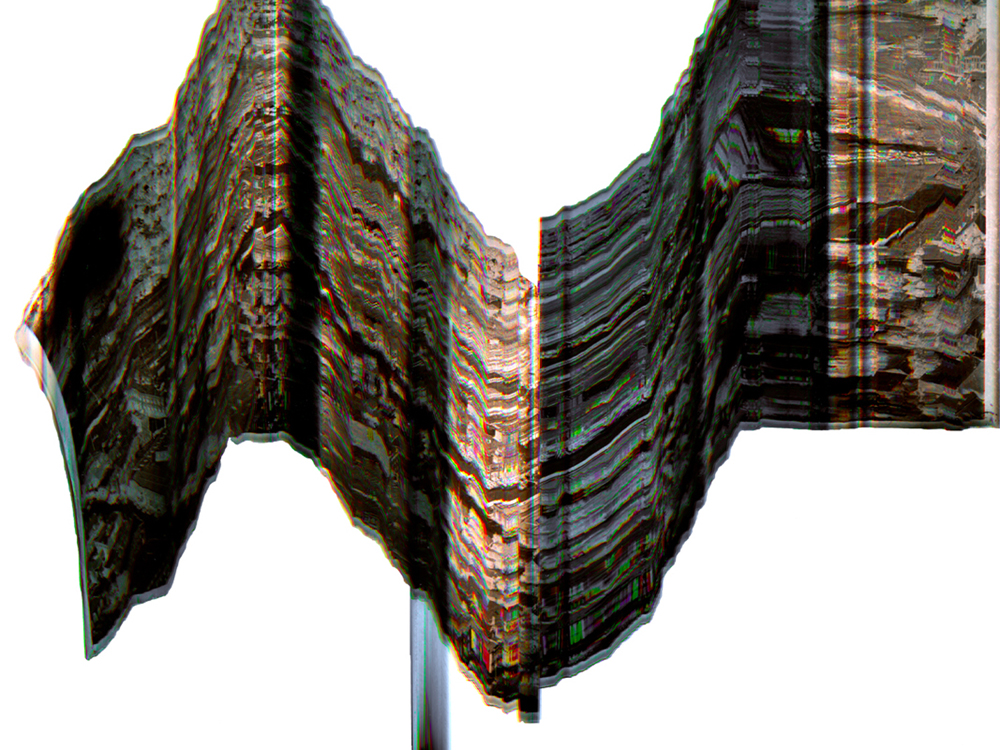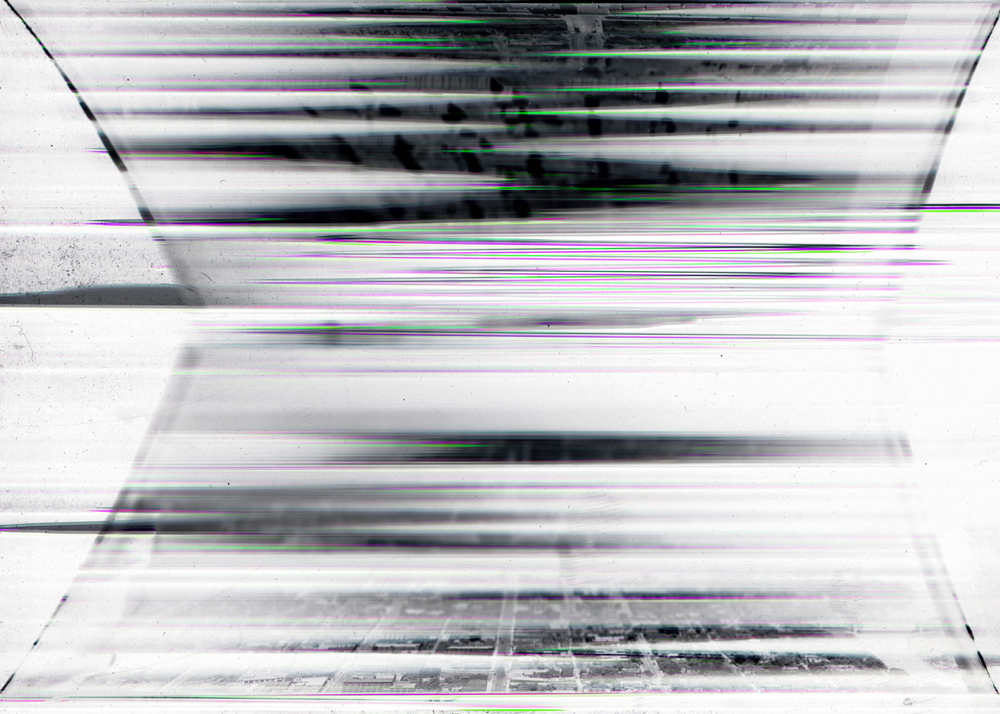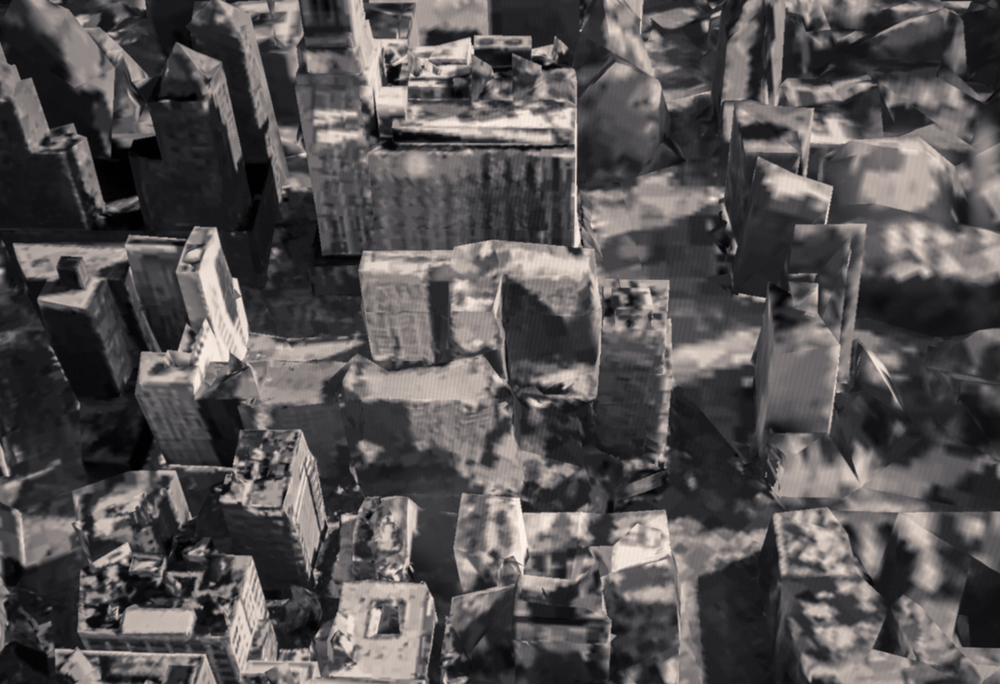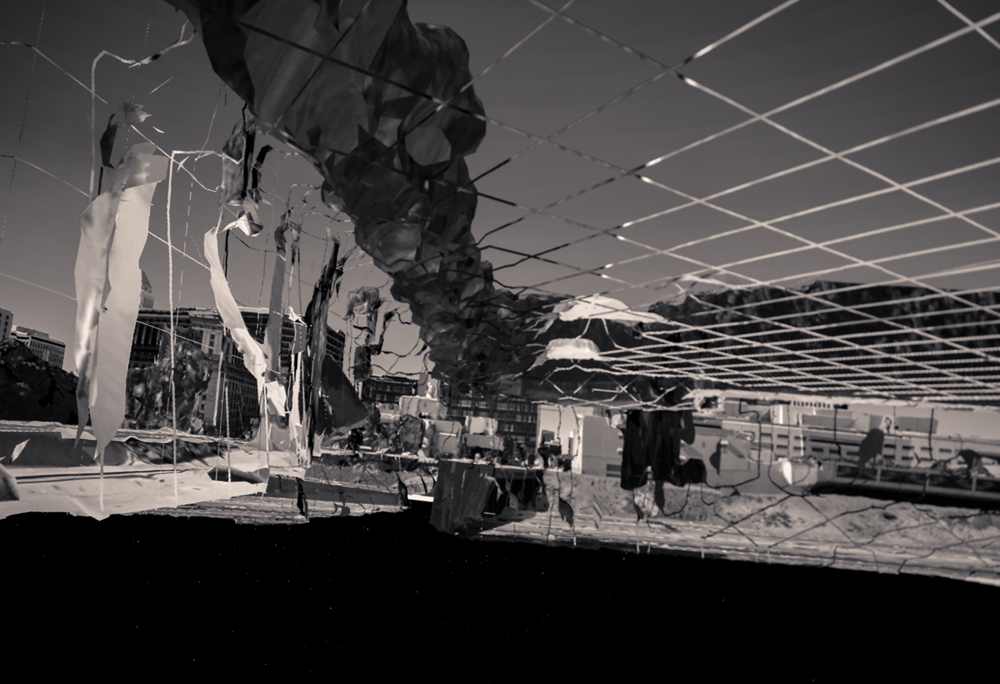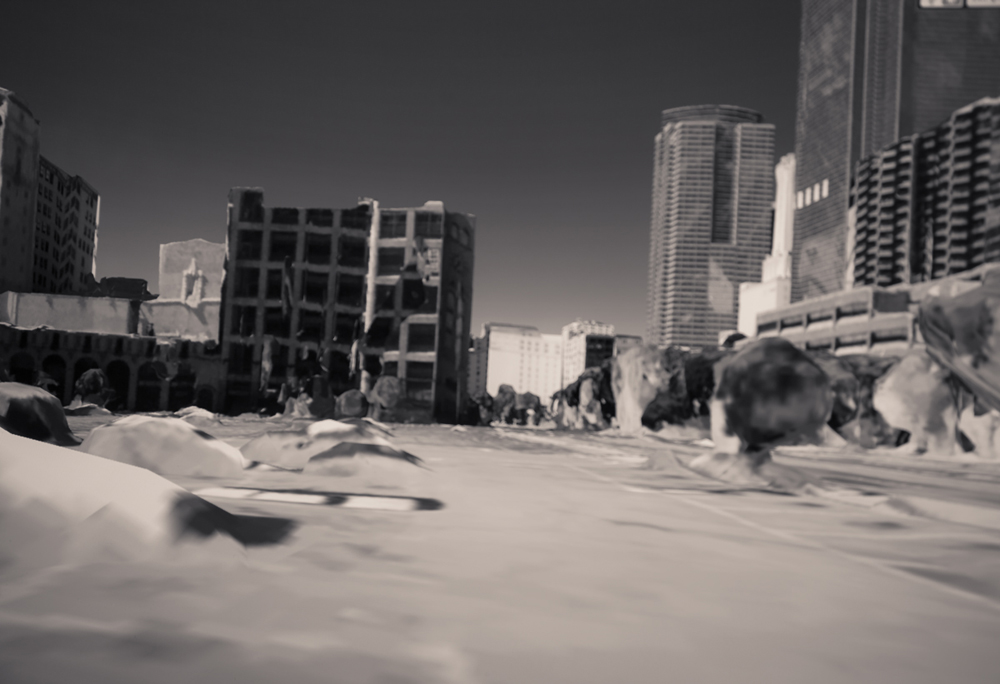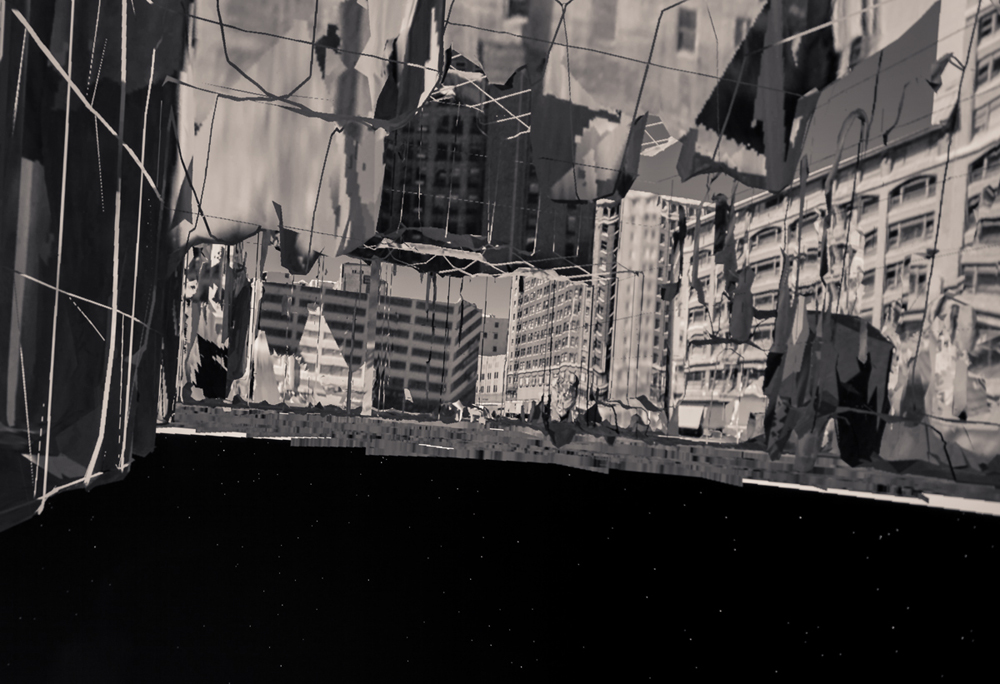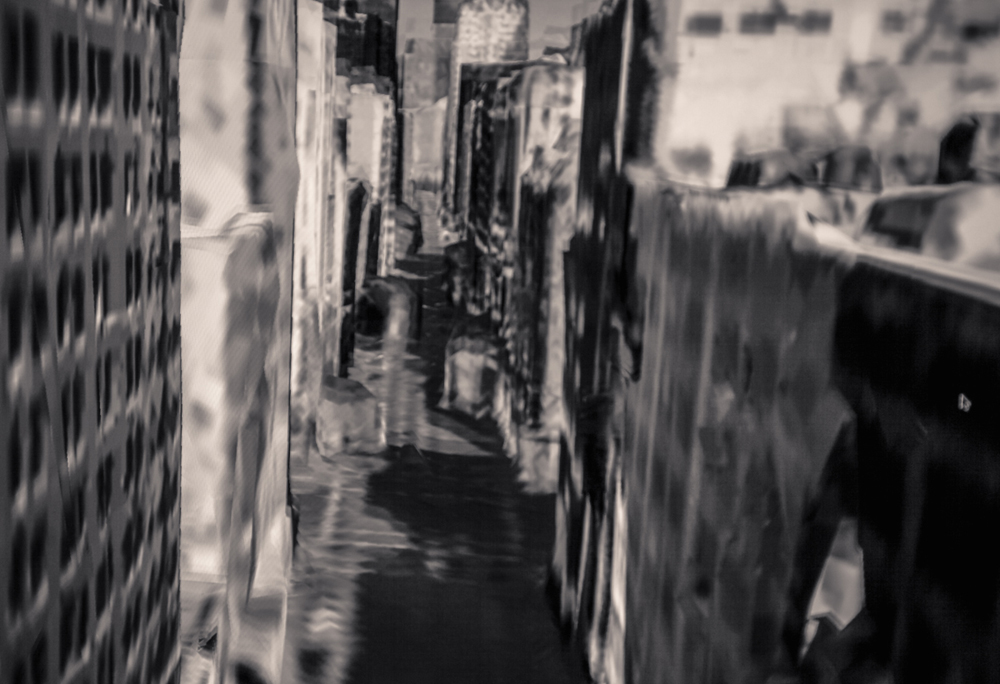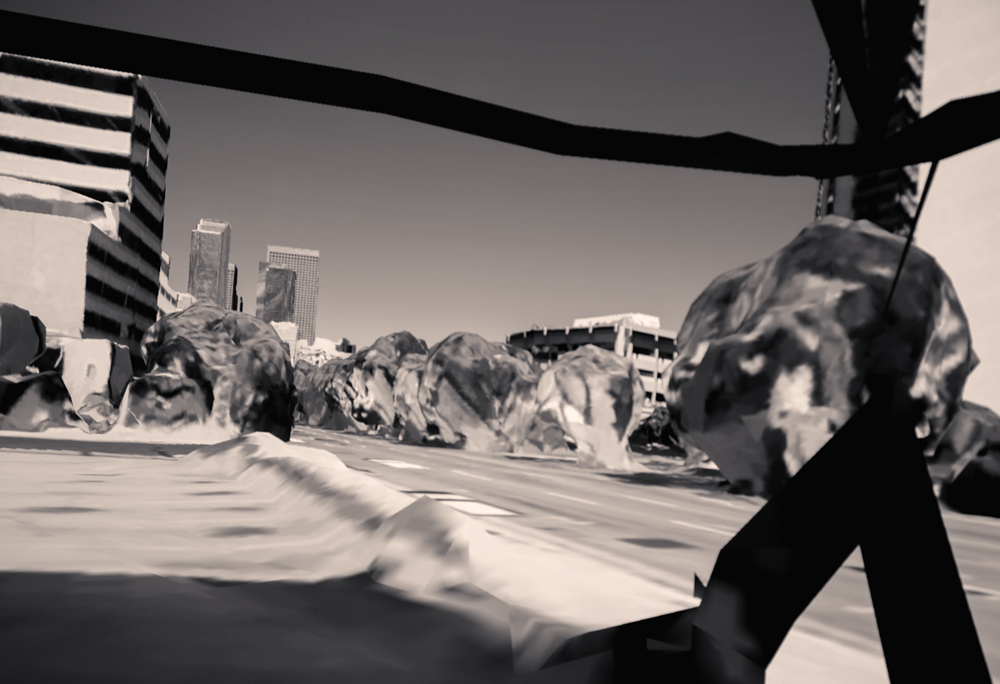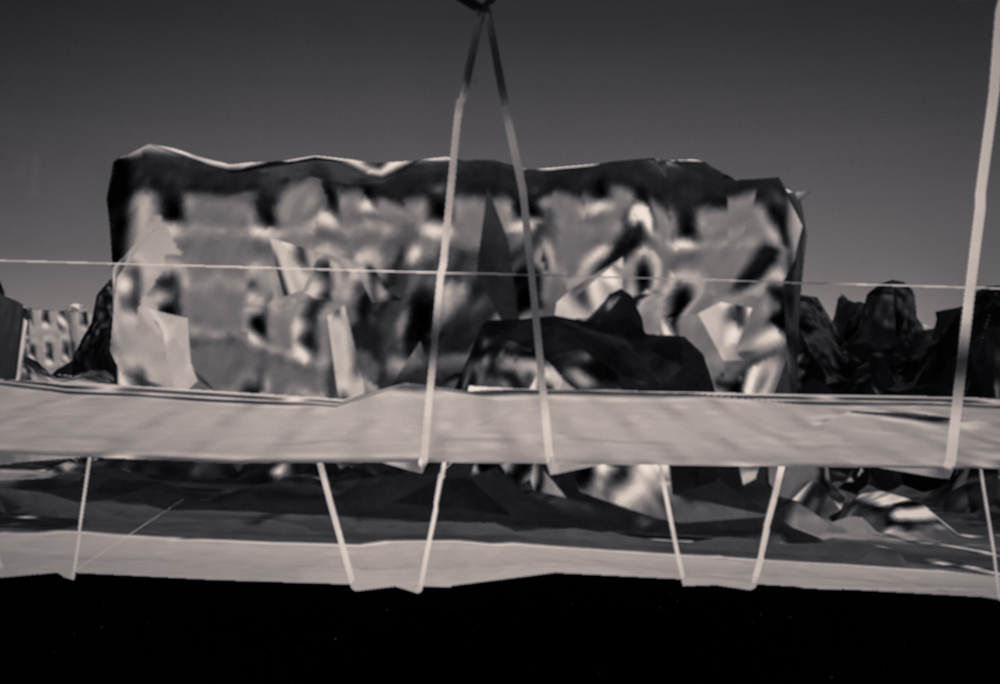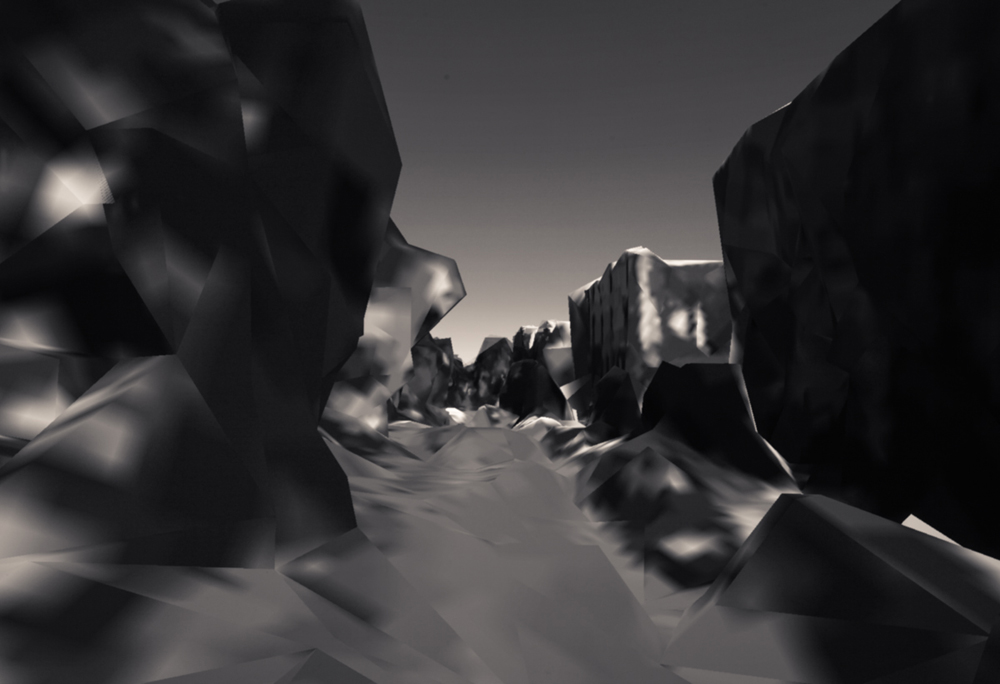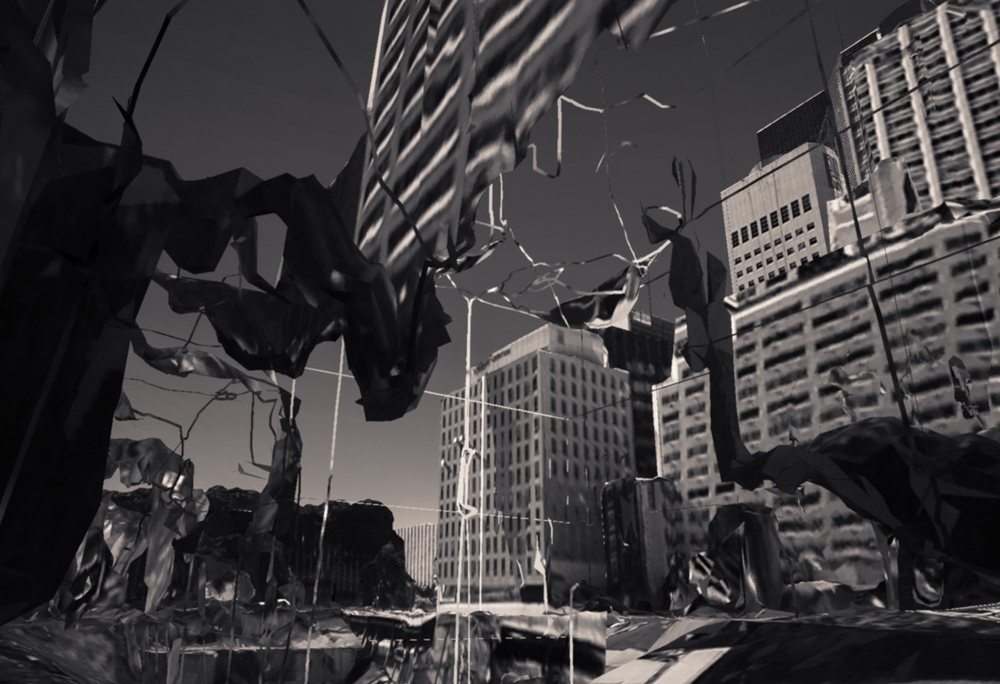Joel Whitaker: The States Project: Ohio
Joel Whitaker has written, refreshingly, about his photographic process: “Purity of the photographic medium, or any other, does not interest me. I rarely travel any great distance to photograph and I prefer to work economically with minimum fuss…and do not hold any preconceived notions as to what a photograph should look like, nor how it should be made.”
In his two related projects, “Cities” and “Invisible Cities” Whitaker works from opposite ends of photography’s continuum – using for “Cities” antique glass plate negatives that were so distressed that their remaining visual information could only be revealed by digital scanning technology and taking as the foundations for “Invisible Cities” high resolution captures of images from Google Earth.
Embracing the element of chance in “Cities,” Whitaker scanned discarded, highly faded, historical glass plate negatives of aerial views of an unknown site to create images of a “new” city, without leaving his Dayton, Ohio studio. He describes his process as “serendipitous scanning” and explains that “anything lying around the studio was fair game to use to transform the glass negatives” into mysterious, obscure landscapes. Whitaker radically altered the original negatives with abstractions, marks and layers of interference; his techniques included moving the glass plates during the scanning process, combining the use of a flashlight with the scanner light during exposure, lifting the scanner cover and the glass plates as the scanner bar moved and sometimes using both transparency and negative settings while scanning individual negatives. Looking beyond and through Whitaker’s camouflage techniques, a viewer can simultaneously see both vestiges of the original aerial views and the lush and colorful abstract overlays and intriguing distortions made by Whitaker’s inspired manipulations. While he had no preconceived notions as to what the final photographs would look like, the works in “Cities” reveal an artist confident enough in his own skills to rely on serendipitous processes.
Taking quite a different approach, Whitaker’s “Invisible Cities” eschews analog materials and makes use of Google Earth’s cutting-edge satellite imaging technology to embark on a virtual tour of, well, virtual cities across the world. For each site selected, while Google’s images loaded and as progressive levels of resolution were rendered, he captured the photographs on a computer monitor. This process created images in which different levels of detail emerged in different areas of the photographs. Because of the random disparities of detail within each photograph, Whitaker’s cityscapes appear to have been ravaged by some sort of apocalyptic event; buildings are melting and have been blown apart, and nuclear winter can be seen in some of them.
“Cities” and “Invisible Cities” use radically different strategies and starting points, from antique to modern, but in each Whitaker has invented provocative worlds that are both enticing and devastating.
Joel Whitaker is an artist and educator living in Dayton, Ohio. He holds a Bachelor of Fine Art in Art from the University of Montevallo, Montevallo, Alabama and a Master of Fine Art in Studio Art from Florida State University, Tallahassee, Florida. In 1990 he was a Visiting Assistant Professor at the University of Iowa, Iowa City, Iowa and in 1993 he joined the faculty of the University of Dayton, Dayton, Ohio, where he currently holds the rank of Professor. He has over 25 years experience in visual arts higher education, arts administration, curatorial work, community service and over 30 years experience in the making of photographs and photo related works. In 2009 he was one of eight Ohio photographers selected to participate in a NEH funded re-photographic survey of FSA photographs of Ohio. In 2008 his work was highlighted in the Elements of Photography, and in 2006, his work was selected for inclusion in Photography Now/One Hundred Portfolios – An International Survey of Contemporary Photography. His work is in several public collections, has been exhibited extensively in the US, and received several state, regional, and university grants.
Cities 2010-2012
Cities is prompted by my interest in the representation of a place and the process we use to arrive at this representation. I am particularly interested in the notion and ephemeral nature of structure, location, and process; physically, psychologically, photographically, and virtually. Cities uses as its subject discarded historical glass plate negatives of aerial views of an unnamed city. I treat these glass plate negatives as objects, exploring the physicality of the substrate and the corresponding image; the glass, the cracks, peeling emulsion, and fading subjects. The resultant photographs are an attempt to visualize my uneasiness with the photographic process, as much as a reflection of my relationship with the idea and physical form of a city – to connect this uneasiness to the photographs (both historical and contemporary) that define and describe them and to utilize the photographic process as a way to explore this notion as well as the suggestive and more poetic qualities of the medium.
Invisible Cities 2013-2014
I troll Google Earth’s virtual cities and like any traveler I wander these cities with my camera photographing along the way. I am not looking for the summarizing image of a place but the transitional; the space between completion and collapse, between time and place. Thus, as a particular location begins to form on the screen, I make my photographs. In the resulting photographs, Invisible Cities, I attempt to reinvent the idea, representation, and physical form of cities, but more importantly the photographs that define and describe them. I utilize the photographic process as a way to explore this notion as well as the more suggestive and poetic qualities of the medium. The resulting photographs are as much informed by my experiences in such places as by my relationship to the physical and intellectual underpinnings of the photographic medium that serve as a record of these experiences and interactions.
Posts on Lenscratch may not be reproduced without the permission of the Lenscratch staff and the photographer.
Recommended
-
Salua Ares: Absense as FormNovember 29th, 2025
-
Ricardo Miguel Hernández: When the memory turns to dust and Beyond PainNovember 28th, 2025
-
Pamela Landau Connolly: Columbus DriveNovember 26th, 2025
-
KELIY ANDERSON-STALEY: Wilderness No longer at the Edge of ThingsNovember 19th, 2025
-
Jackie Mulder: Thought TrailsNovember 18th, 2025

